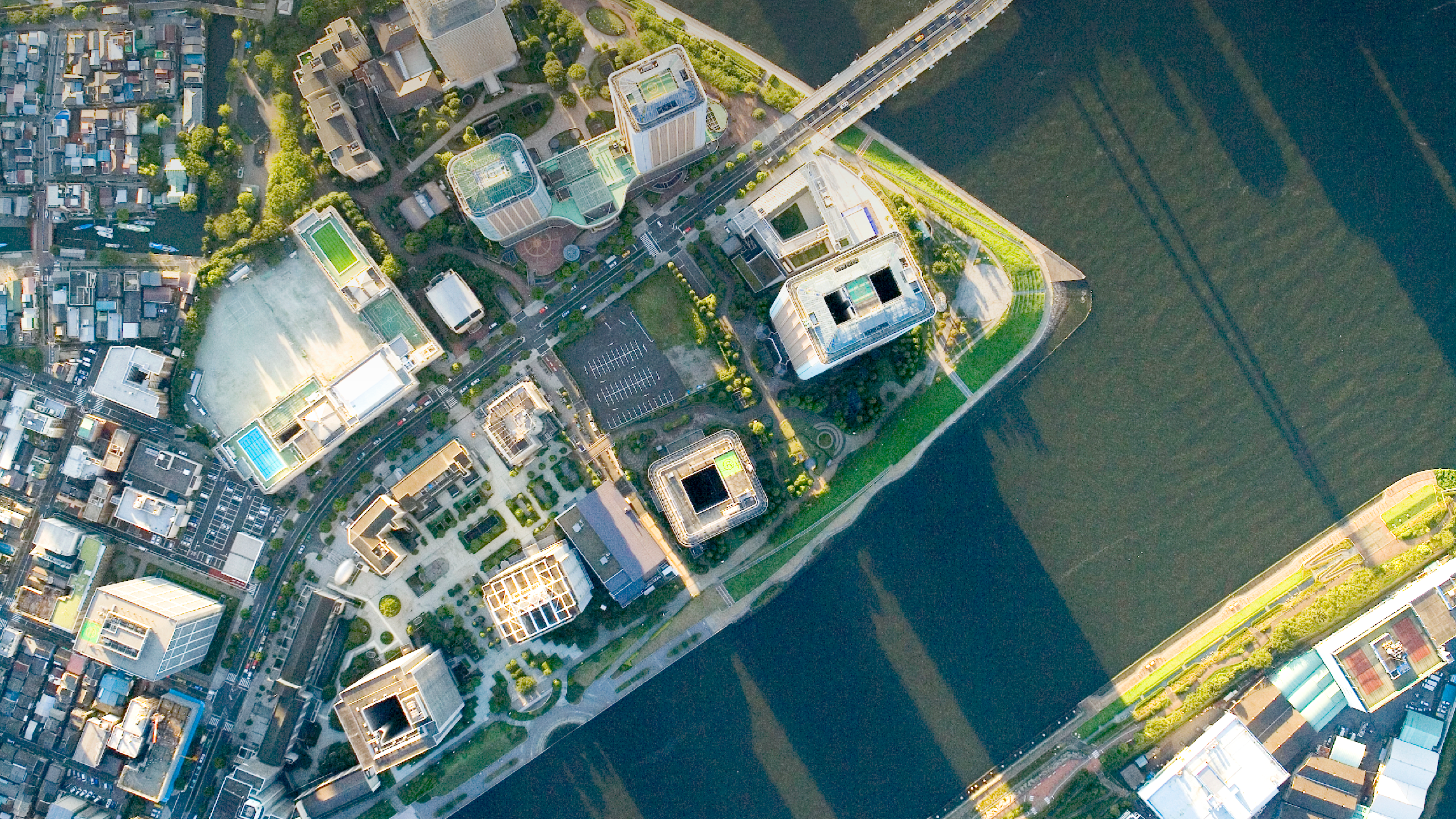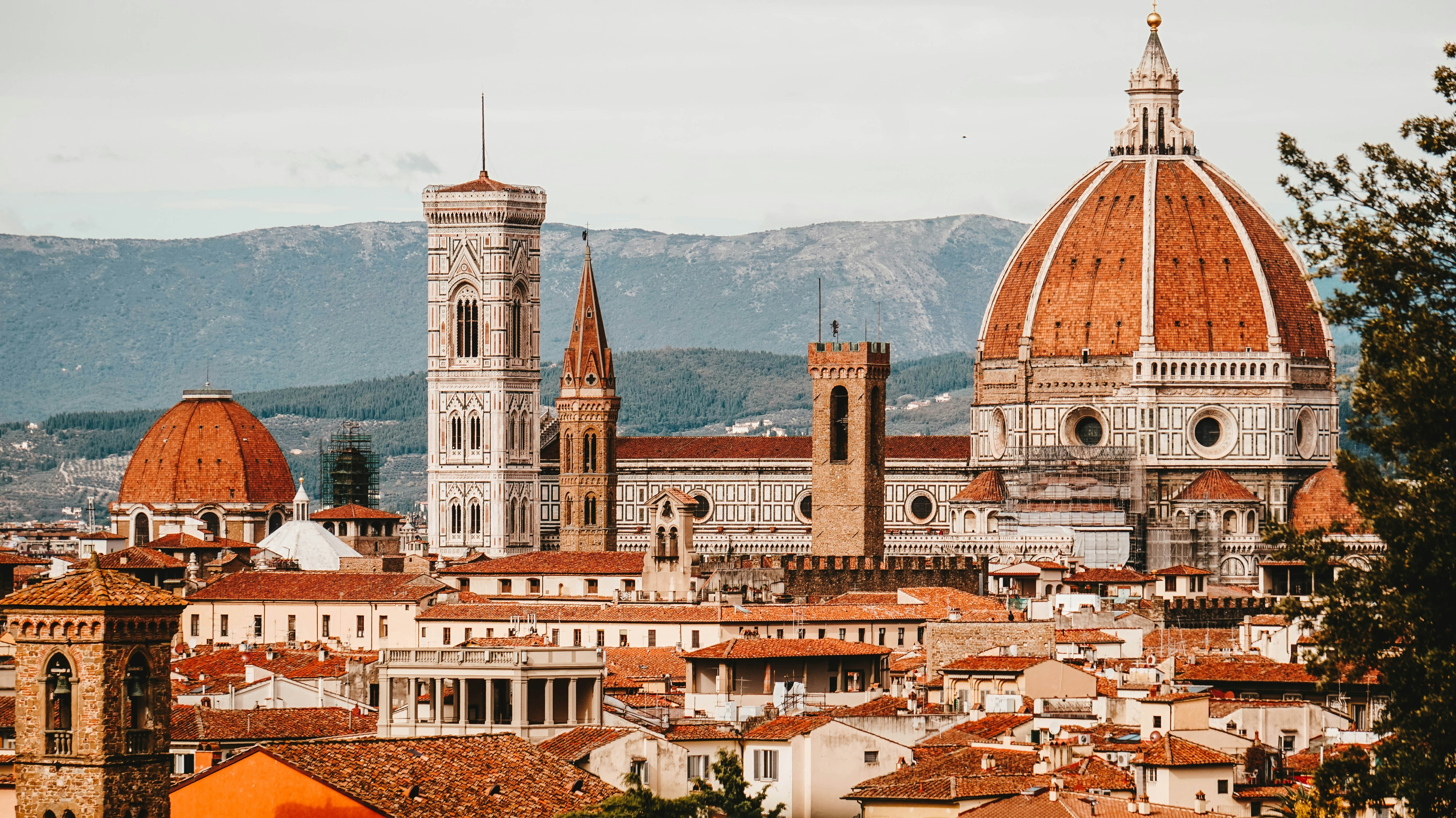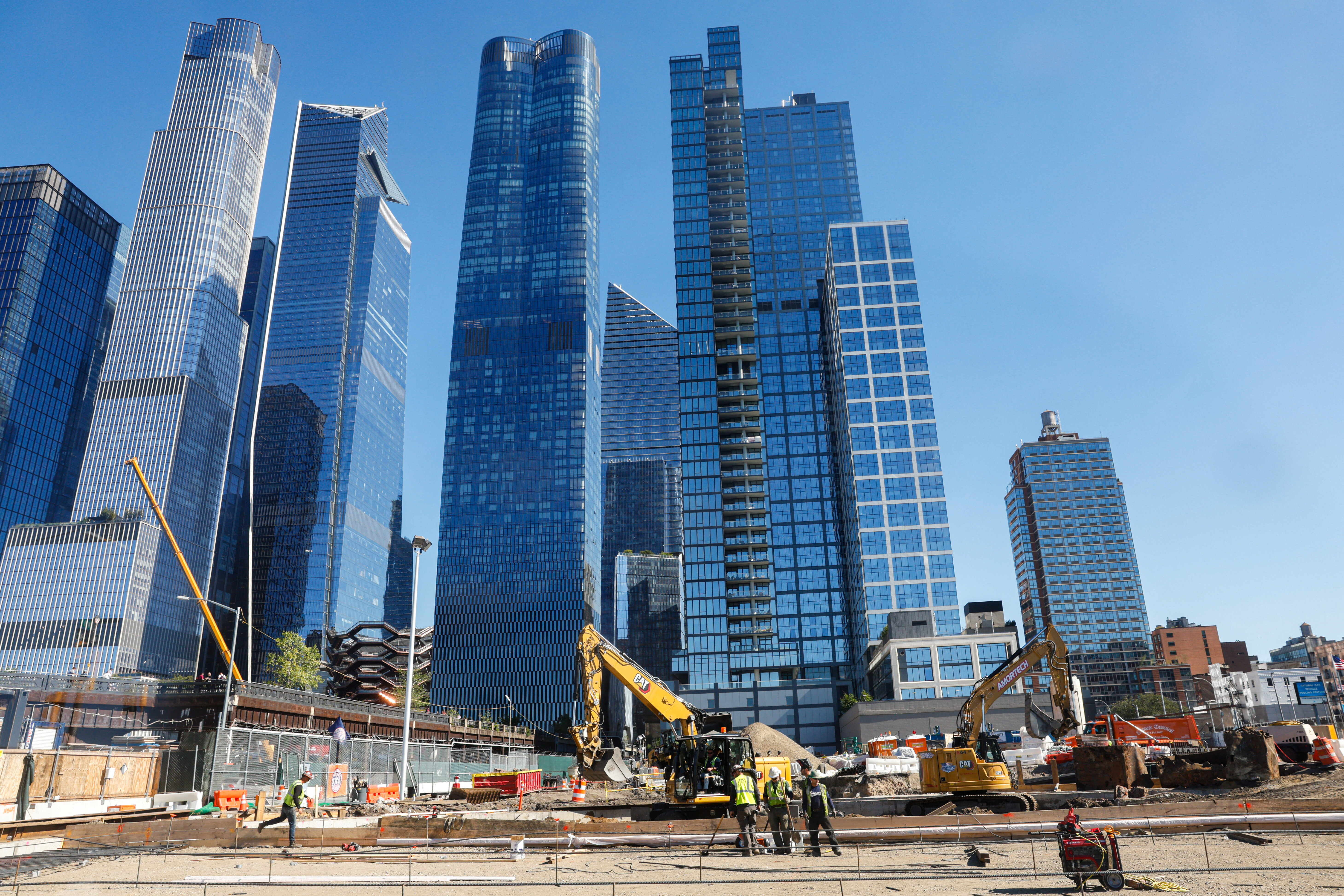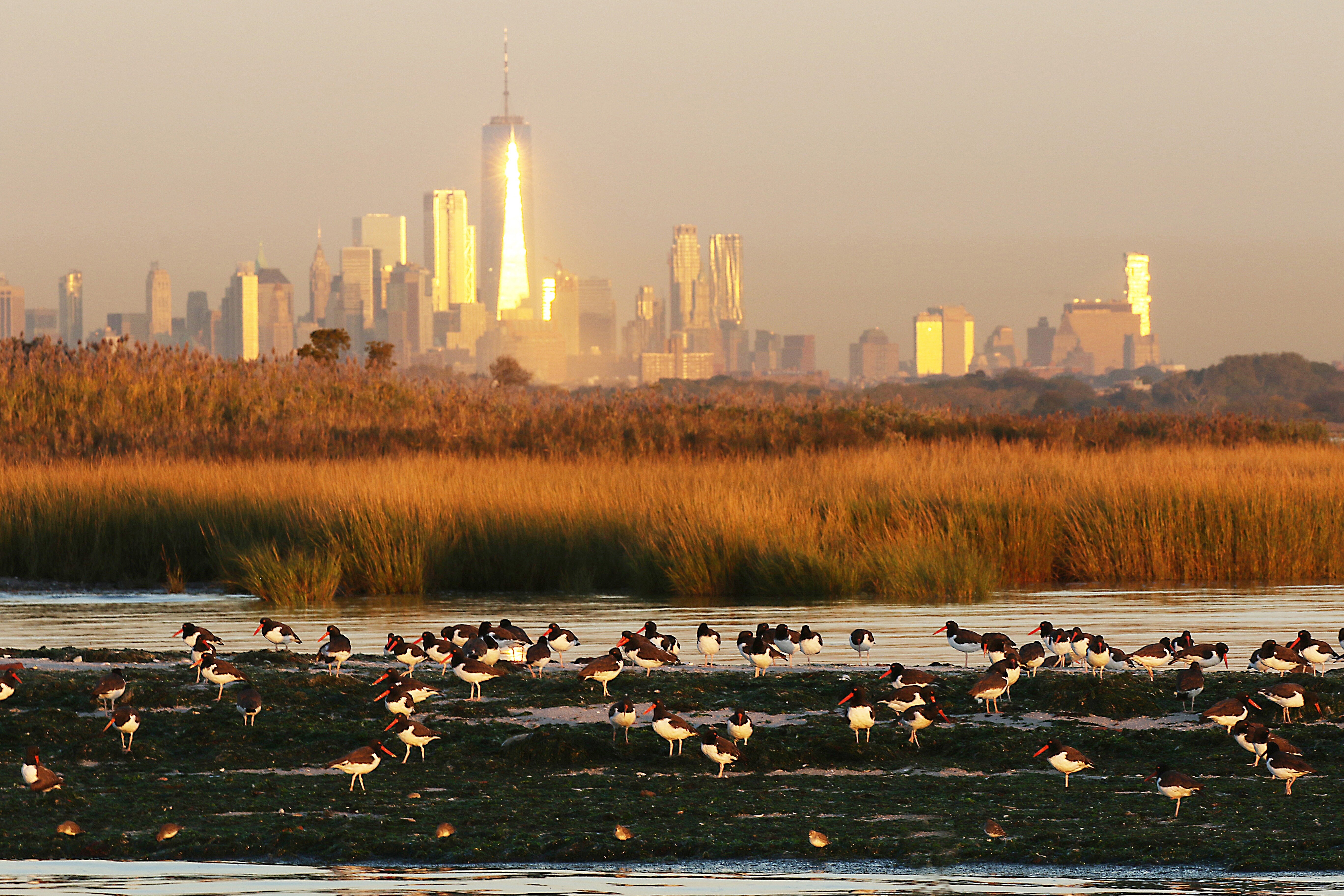Cities could be our best weapon in the fight against climate change

Image: REUTERS/Gary Hershorn
Stay up to date:
Migration
Cities are stepping-up to confront many of the world’s biggest existential challenges – especially climate change. One reason is that cities have always been where the future happens first; spaces that cultivate creativity, resourcefulness and innovation. City leaders are, for the most part, pragmatic – they are problem solvers and are often attuned to local needs in ways that national politicians simply are not. Sensitive to the massive threats on are horizon, cities are busily solving their own problems and sharing solutions across national and international borders.
Cities have the potential to change the game when it comes to addressing climate change. For one, they are are prodigious emitters of greenhouse gasses - more than 70% by some estimates. They also concentrate over half of the world’s population - more than 4 billion people - and this number is predicted to rise by another 2.5 billion by 2050. They also have the most to lose from inaction, since rising seas, extreme heat, water scarcity and air pollution are making growing numbers of cities unliveable. But cities are also setting the pace when it comes to setting standards for meeting green targets.
Accept our marketing cookies to access this content.
These cookies are currently disabled in your browser.
Following conversations with mayors, urban planners and city experts from around the world, here are six things the most successful cities are doing to prepare for tomorrow’s challenges.
Without a plan that lays out clear goals, targets and indicators, cities are flying blind. And without real-time data to prioritize issues, measure outcomes, and communicate results, these plans can quickly run out of steam. City leaders and residents also need to be open to updating these plans, and sticking to them across successive governments. This can be tough in times of political and social polarization. All the more reason why cities need the autonomy and discretion to take hard decisions.
Take the case of Curitiba in Brazil, one of the world’s most unequal countries. The city set a vision decades back to become the most inclusive city in the country. Former mayor Jamie Lerner set out a simple but compelling vision around mobility, updated the plan regularly, and in the process gave rise to one of the most innovative cities in the country. While facing enormous resistance, the city flourished and has been alternately described as the green capital and most innovative city in the world.
Cities must place environmental priorities front and center. Around the world, cities are already setting tough emissions targets, investing in greener infrastructure, providing subsidies for renewable energy, and building parks and municipal sinks to reduce their carbon footprint. In fact, large coalitions of cities are leading a global revolution in clean energy, rethinking building strategies and cement use, and rolling out green canopies, painted rooftops and solar roads. This not only reduces greenhouse gas emissions, it also reduces heat islands, bolsters water reserves, saves electricity, increases real estate values and improves overall population health.
Consider Singapore, one of the densest cities in the world, but also a model of green planning. In the 1960s, Singapore was heavily congested, with open sewers and dense slums. Over the past two decades, the city set aside hundreds of acres and planted 3 million trees for an urban garden that acts as the lungs of the city. It also created one of the largest fresh water nature reserves on the planet. As Singapore shows, lasting reforms are best achieved with greater commitments of public and private resources towards new project pipelines and stricter regulations to ensure sustainable infrastructure development.
Accept our marketing cookies to access this content.
These cookies are currently disabled in your browser.
Cities need to diversify their energy production. Even though in many parts of the world the federal and state governments control energy policy, cities exert more leverage over public and private utilities than they realize. When they work with national authorities - and even when they don’t - cities are dramatically transforming their energy grids through initiatives such as moving to community solar and wind farms and promoting localized, or embedded, energy schemes. They are reducing emissions and generating massive savings in the process. Already, thousands of cities have adopted renewable energy - and today more than 40 cities are entirely powered by renewables, from Georgetown in Texas to Reykjavik in Iceland and Shenzhen in China.
Take Oslo, which set a target to reduce CO2 emissions by 95% before 2030. It is doing this by doubling down on electric vehicles and charger stations, together with incentives and subsidies, alongside improved access to public transport and a massive investment in bike sharing. It has also introduced circular waste management systems, purchased a bio-gas plant, and is recycling 50% of all its food waste. Oslo has pursued a highly collaborative policy with its national counterparts, and is serving as a model of good practice for the rest of the country. Cities like Oslo are demonstrating the kind of climate leadership sorely lacking from their national counterparts. These and similar models can and must be exported and adapted to cities around the world.
What is a circular economy?
The death of most cities is sprawl. To avoid this, cities need to zone intelligently and avoid recreating vertical sprawls and segregated ghettos of concentrated disadvantage. This means taking advantage of abundant vacant and underused (rather than relying on new greenfield sites). When cities are denser, they are easier for residents and visitors to navigate. And this can save energy, reduce emissions and improve overall liveability.
Cities that design-in integrated and multi-use solutions tend to be much more successful. This applies not just to issues of denser and affordable housing, but also integrated public transport. When planned and managed intelligently, it can reduce congestion, cut emissions, improve health, reduce dispersion and even improve public safety. Seoul, in South Korea, provides a good example of this. The city’s population has actually increased four times since the 1980s, but its geographic footprint has hardly changed. Why? People live more densely and over 90% of the population - close to 7 million people a day - take some form of public transportation - whether on rail, road, water, or bike-paths - to work and play.
Accept our marketing cookies to access this content.
These cookies are currently disabled in your browser.
The good news is that the solutions in some of the world’s most challenged cities are potentially closer at hand than many assume. A major part of the answer lies in harnessing the dynamism of the informal sector. Urban informality should not be construed as a problem, but rather an asset and an opportunity. When exploring innovative financing solutions, for example, the task for city planners and investors - across Africa and Asia in particular - is to maintain the virtues of informality (demand responsiveness, job creation and self-sufficiency) while reducing its vices (unsafe conditions, low-quality services, unfair labour practices, and at times inefficiency and high costs for consumers).
The good news is that in many of these cities, phone penetration, data generation and technological innovations are increasing at breakneck speed, and this can hasten the development of innovative solutions. What is more, smart micro-financing options are also becoming more available. Technologists and investors should take note of the challenges in these fast-growing, low-income and low-infrastructure cities if for nothing else than to nudge urban tech development towards more progressive urbanism. The next wave of urban innovation will likely occur in the global south, not the mature economies of the world’s more advanced economies.
Finally, urban leaders must embrace a new geopolitics of empowered cities. A growing number of mayors are demanding their voices be heard on the most serious global issues of the day. Whether national politicians and diplomats like it or not, cities are muscling their way to the policy-making table. Over the past few decades, cities have crafted formal and informal networks, including sister-city arrangements and cooperative agreements on areas like culture, science, health and education. As in centuries past, mayors are dispatching emissaries to other countries to strengthen opportunities for investment, science, tourism and trade. In the process, many cities are discovering they have more in common with one another than with their own nations.
Two areas of radical consensus are the climate agenda and migration. As of 2019, at least 9,200 cities representing over 806 million people from every continent committed to a global pact on climate and energy. Their stated goal is to accelerate action that can meet and ultimately exceed the 2015 Paris Climate Agreement targets.
United Nations organizations such as the International Organization of Migration and the United Nations High Commissioner for Refugees are engaging more than ever with cities, particularly on issues related to migrants and refugees. Even the UN’s Sustainable Development Goals explicitly advocate for inclusive, safe, resilient and sustainable cities. Emboldened by these successes, city advocates are supporting a new urban agenda that underlines the central place of cities in delivering global development objectives.
At a time when multilateralism is on the rocks, cities are building genuinely global alliances to amplify support for global public goods. There are more than 300 inter-city coalitions around the world, more city networks than there are countries. By forming pacts to address climate change, manage migration and counter extremism and terrorism, cities are instinctively recognizing their interdependence and the dividends of global cooperation.
These city alliances offer some hope to break the deadlock in our geopolitics. It is worth recalling that cities have always competed and collaborated with one another, irrespective of their national affiliation. But over the coming decades, cities will wield increasingly more power than they may recognize. Fostering collective action on a global scale is essential to ensuring not just city competitiveness, but also our common survival. Notwithstanding the seductive call of nationalism in many parts of the world, people still feel a strong sense of belonging to cities, a sense based on shared principles of cooperation, openness, diversity and inclusion. By building strong cities and city networks, citizens can translate these progressive values into a platform for national and, ultimately, global action.
Don't miss any update on this topic
Create a free account and access your personalized content collection with our latest publications and analyses.
License and Republishing
World Economic Forum articles may be republished in accordance with the Creative Commons Attribution-NonCommercial-NoDerivatives 4.0 International Public License, and in accordance with our Terms of Use.
The views expressed in this article are those of the author alone and not the World Economic Forum.
Related topics:
Forum Stories newsletter
Bringing you weekly curated insights and analysis on the global issues that matter.
More on Urban TransformationSee all
Kate Whiting
November 11, 2025
Jeff Merritt and Vivian Brady-Phillips
November 6, 2025
Jeff Merritt and Andras Szorenyi
November 3, 2025
Marielle Anzelone and Georgia Silvera Seamans
October 31, 2025






